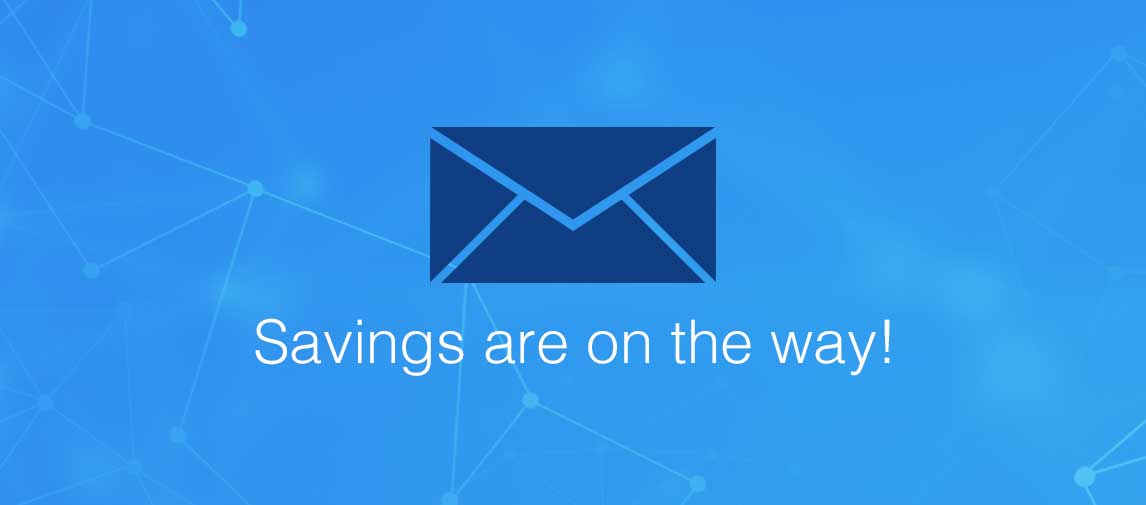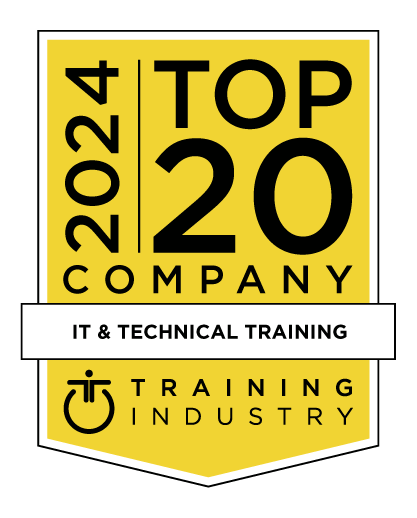title
Please take a moment to fill out this form. We will get back to you as soon as possible.
All fields marked with an asterisk (*) are mandatory.
Microsoft Certified: Azure Database Administrator Associate
Course Description
Overview
As the Azure database administrator, you implement and manage the operational aspects of cloud-native and hybrid data platform solutions built on SQL Server and Azure SQL services. You use a variety of methods and tools to perform and automate day-to-day operations, including applying knowledge of using Transact-SQL (T-SQL) and other tools for administrative management purposes.You’re a database administrator who manages on-premises and cloud databases built with SQL Server and Azure SQL services.
You’re responsible for the following concerning database solutions:
- Management
- Availability
- Security
- Performance monitoring and optimization
You evaluate and implement migration strategies for moving databases between Azure and on-premises. Plus, you work with Azure data engineers, Azure solution architects, Azure developers, data scientists, and other professionals to manage operational aspects of data platform solutions.
You will have 100 minutes to complete this assessment.
This exam will be proctored, and is not open book. You may have interactive components to complete as part of this exam.
If you fail a certification exam, don’t worry. You can retake it 24 hours after the first attempt. For subsequent retakes, the amount of time varies.
Objectives
- Plan and implement data platform resources
- Implement a secure environment
- Monitor, configure, and optimize database resources
- Configure and manage automation of tasks
- Plan and configure a high availability and disaster recovery (HA/DR) environment
Audience
Prerequisites
-
As a candidate for this certification, you should have subject matter expertise in building database solutions that are designed to support multiple workloads built with:
- SQL Server on-premises
- Azure SQL services
- Azure SQL Database
- Azure SQL Managed Instance
- SQL Server on Azure Virtual Machines (Windows and Linux)
Topics
- Prepare to maintain SQL databases on Azure
- Introduction
- Describe Microsoft Intelligent Data Platform roles
- Understand SQL Server in an Azure virtual machine
- Design Azure SQL Database for cloud-native applications
- Explore Azure SQL Database Managed Instance
- Knowledge check
- Summary
- Deploy IaaS solutions with Azure SQL
- Introduction
- Explain IaaS options to deploy SQL Server in Azure
- Understand hybrid scenarios
- Explore performance and security
- Explain high availability and disaster recovery options
- Exercise: Provision a SQL Server on an Azure Virtual Machine
- Knowledge check
- Summary
- Deploy PaaS solutions with Azure SQL
- Introduction
- Explain PaaS options for deploying SQL Server in Azure
- Explore single SQL database
- Deploy SQL database elastic pool
- Understand SQL database hyperscale
- Examine SQL managed instance
- Describe SQL Edge
- Exercise: Deploy an Azure SQL Database
- Knowledge check
- Summary
- Evaluate strategies for migrating to Azure SQL
- Introduction
- Understand compatibility level
- Understand Azure preview features
- Describe Azure database migration options
- Knowledge check
- Summary
- Migrate SQL Server workloads to Azure SQL Database
- Introduction
- Choose the right Azure SQL Database feature
- Use Azure SQL migration extension to migrate to Azure SQL Database
- Explore Data Migration Assistant to migrate to Azure SQL Database
- Migrate to Azure SQL Database using BACPAC
- Use an online method to migrate to Azure SQL Database
- Move data to Azure SQL Database
- Exercise - Migrate a SQL Server database to Azure SQL Database
- Knowledge check
- Summary
- Migrate SQL Server workloads to Azure SQL Managed Instance
- Introduction
- Evaluate migration scenarios
- Use Log Replay Service (LRS) to migrate
- Migrate using Managed Instance link
- Move data to SQL Managed Instance
- Exercise - Migrate a SQL Server database to Azure SQL Managed Instance
- Knowledge check
- Summary
- Configure database authentication and authorization
- Introduction
- Describe Active Directory and Microsoft Entra ID
- Describe authentication and identities
- Describe Security Principals
- Describe database and object permissions
- Identify authentication and authorization failures
- Exercise: Authorize Access to Azure SQL Database with Microsoft Entra ID
- Knowledge check
- Summary
- Protect data in-transit and at rest
- Introduction
- Explore Transparent Data Encryption
- Configure server and database firewall rules
- Explain object encryption and secure enclaves
- Enable encrypted connections
- Describe SQL injection
- Understand Azure Key Vault
- Exercise: Configure a server-based firewall rule using the Azure portal
- Knowledge check
- Summary
- Implement compliance controls for sensitive data
- Introduction
- Explore data classification
- Explore server and database audit
- Implement Dynamic Data Masking
- Implement Row Level security
- Understand Microsoft Defender for SQL
- Explore Azure SQL Database Ledger
- Implement Azure Purview
- Exercise: Enable Microsoft Defender for SQL and Data Classification
- Knowledge check
- Summary
- Describe performance monitoring
- Introduction
- Describe performance monitoring tools
- Describe critical performance metrics
- Establish baseline metrics
- Explore extended events
- Describe Azure SQL Insights
- Explore Query Performance Insight
- Exercise: Isolate problems with monitoring
- Knowledge check
- Summary
- Configure SQL Server resources for optimal performance
- Introduction
- Explain how to optimize Azure storage for SQL Server virtual machines
- Describe virtual machine resizing
- Optimize database storage
- Control SQL Server resources
- Knowledge check
- Summary
- Configure databases for optimal performance
- Introduction
- Explore database maintenance checks
- Describe database scoped configuration options
- Describe automatic tuning
- Describe intelligent query processing
- Exercise: Detect and correct fragmentation issues
- Knowledge check
- Summary
- Explore query performance optimization
- Introduction
- Understand query plans
- Explain estimated and actual query plans
- Describe dynamic management views and functions
- Explore Query Store
- Identify problematic query plans
- Describe blocking and locking
- Exercise: Identify and resolve blocking issues
- Knowledge check
- Summary
- Explore performance-based design
- Introduction
- Describe normalization
- Choose appropriate data types
- Design indexes
- Exercise: Identify database design issues
- Knowledge check
- Summary
- Evaluate performance improvements
- Introduction
- Describe wait statistics
- Tune and maintain indexes
- Understand query hints
- Exercise: Isolate problem areas in poorly performing queries
- Knowledge check
- Summary
- Automate deployment of database resources
- Introduction
- Describe deployment models in Azure
- Automate deployment by using Azure Resource Manager templates and Bicep
- Automate deployment by using PowerShell
- Automate deployment by using Azure CLI
- Exercise: Deploy an Azure SQL Database using an Azure Resource Manager template
- Knowledge check
- Summary
- Create and manage SQL Agent jobs
- Introduction
- Create a SQL Server maintenance plan
- Describe task status notifications
- Knowledge check
- Exercise: Create a CPU status alert for a SQL Server
- Summary
- Manage Azure PaaS tasks using automation
- Introduction
- Explore Elastic jobs
- Understand Azure Automation
- Build an automation runbook
- Automate database workflows by using Logic Apps
- Monitor automated tasks
- Exercise: Deploy an automation runbook to automatically rebuild indexes
- Knowledge check
- Summary
- Describe high availability and disaster recovery strategies
- Introduction
- Describe recovery time objective and recovery point objective
- Explore high availability and disaster recovery options
- Describe Azure high availability and disaster recovery features for Azure Virtual Machines
- Describe high availability and disaster recovery options for PaaS deployments
- Explore an IaaS high availability and disaster recovery solution
- Describe hybrid solutions
- Knowledge check
- Summary
- Explore IaaS and PaaS solutions for high availability and disaster recovery
- Introduction
- Describe failover clusters in Windows Server
- Configure Always-on availability groups
- Describe temporal tables in Azure SQL Database
- Describe active geo-replication for Azure SQL Database
- Explore auto-failover groups for Azure SQL Database and Azure SQL Managed Instance
- Exercise: Configure geo replication for Azure SQL Database
- Knowledge check
- Summary
- Back up and restore databases
- Introduction
- Back up and restore SQL Server running on Azure virtual machines
- Back up a SQL Server virtual machine
- Back up and restore a database using Azure SQL Database
- Exercise: Backup to URL
- Knowledge check
- Summary
Related Courses
-
Designing and Implementing a Microsoft Azure AI Solution
LQEX-MOC-AI-102- Duration: 1
- Delivery Format: Exam Vouchers
- Price: 165.00 USD
-
Microsoft Azure AI Fundamentals
LQEX-MOC-AI-900- Duration: 1
- Delivery Format: Exam Vouchers
- Price: 99.00 USD
Self-Paced Training Info
Learn at your own pace with anytime, anywhere training
- Same in-demand topics as instructor-led public and private classes.
- Standalone learning or supplemental reinforcement.
- e-Learning content varies by course and technology.
- View the Self-Paced version of this outline and what is included in the SPVC course.
- Learn more about e-Learning
Course Added To Shopping Cart
bla
bla
bla
bla
bla
bla
Exam Terms & Conditions
ONCE YOU PURCHASE THIS EXAM YOU WILL NOT BE ABLE TO CANCEL YOUR ORDER. You are billed for the course after hitting submit. Exams are non-refundable.
Vouchers expire 12 months from the date they are issued, unless otherwise specified in the terms and conditions. Voucher expiration dates cannot be extended. All sales are final.Please refer to the full terms and conditions here.
Exam Terms & Conditions
Sorry, there are no classes that meet your criteria.
Please contact us to schedule a class.

STOP! Before You Leave
Save 0% on this course!
Take advantage of our online-only offer & save 0% on any course !
Promo Code skip0 will be applied to your registration
Purchase Information
title
Please take a moment to fill out this form. We will get back to you as soon as possible.
All fields marked with an asterisk (*) are mandatory.










